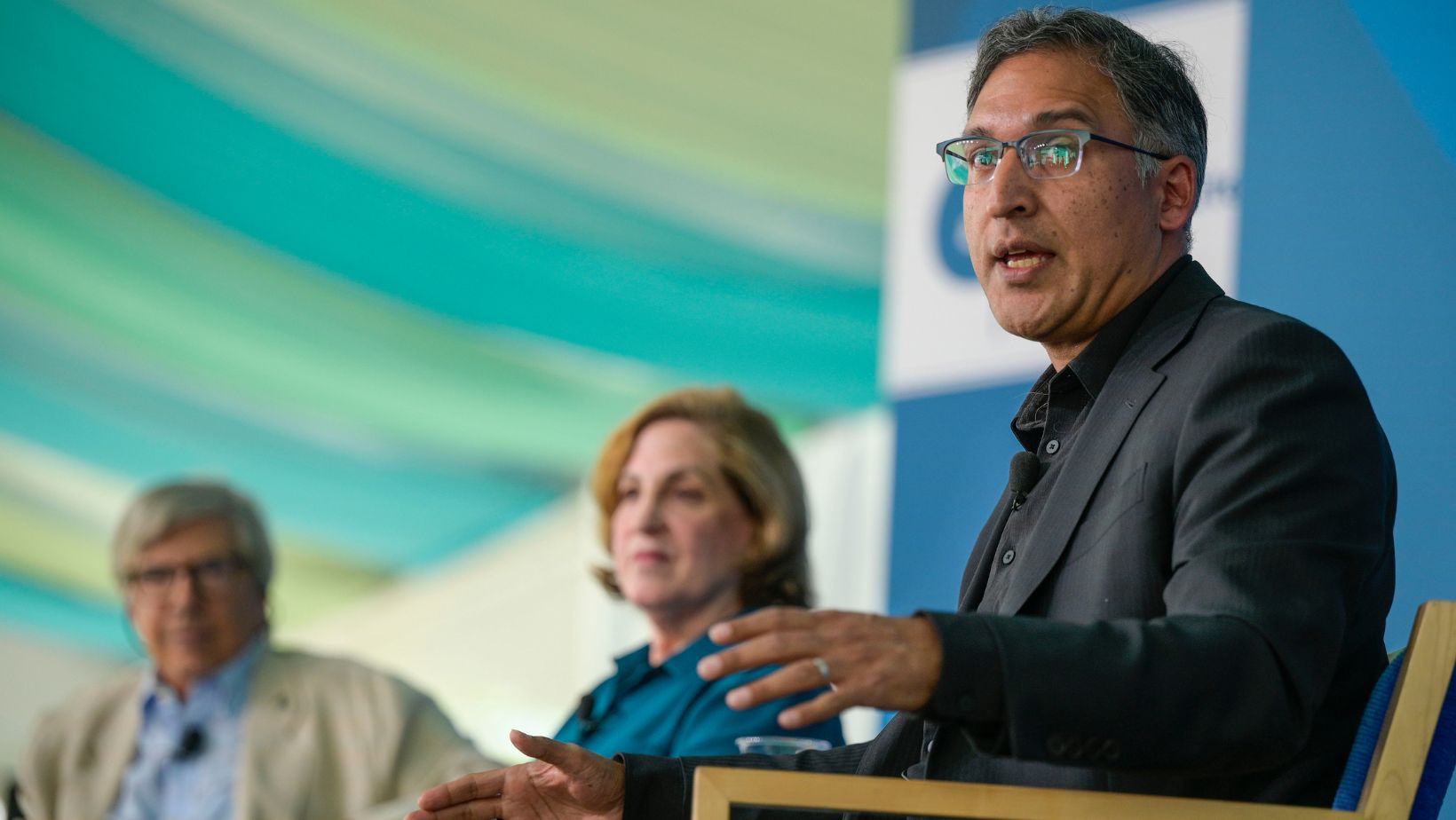In a new series that aims to promote the restoration of civil discourse, experts at the Aspen Institute weigh in on the consequences and policy ramifications — social, fiscal, and otherwise — of the US government shutdown of 2013.
Meryl Justin Chertoff is director of the Aspen Institute Justice and Society Program. She is an Adjunct Professor of Law at Georgetown Law, where she teaches about state government, intergovernmental affairs and state courts.
With the government-funding and debt-limit standoffs now over — or at least postponed for a few months — the nation can breathe a collective sigh of relief. But while government offices, national landmarks, and historic sites around the country reopen, a quieter crisis continues to unfold in the halls of federal courthouses around the nation, threatening access to justice for thousands of litigants. What the shutdown and potential debt default threatened to do abruptly, the deep and indiscriminate sequester cuts that began in March 2013 (with a second round scheduled to kick in by January), along with ongoing Congressional dysfunction, may accomplish in slow motion.
The salaries of Supreme Court and US judges of the lower federal courts are protected under Article III of the Constitution and the Judiciary Act. The Supreme Court and lower courts managed to remain open during the recent government shutdown by drawing on reserve funds. But the effect was to throw sand into the gears of the federal judicial system. According to CNN, Judge John Bates, director of the Administrative Office of the Courts, said that “essential” business of the federal courts had to continue despite the shutdown, including “emergency activities necessary for the safety of human life and protection of property.”
But here is where the shutdown hurt:
- Federal judges were being asked to stay (delay) civil cases — that is, all federal non-criminal proceedings;
- Federal prosecutors, who try criminal cases on behalf of the US government, were being furloughed; so were the federal defenders who represent indigent defendants on federal criminal cases. This meant that US Attorney’s Offices around the nation could not investigate, indict or try federal crimes like organized crime, drug trafficking, money-laundering, terrorism and government corruption; and cases that were on trial had to be delayed if the parties were unrepresented due to furloughs;
- Law clerks, court officers, administrators, protection officers, and security staff — the people who keep the Courts moving — were furloughed, and this came on top of cuts already made in March due to sequestration;
- Jurors would not have been paid had the shutdown continued past October 18. They could still have been called with the assurance that payments would eventually be made, but with considerable delay;
- The shutdown exacerbated already lengthy backlogs in processing immigration, probation, and parole petitions.
The government shutdown threatened the livelihoods of thousands of court employees, but its reverberations could have been even more widespread. While a short shutdown would not invoke it, a long one could violate defendants’ Sixth Amendment right to a speedy trial, a protection codified by Congress in the Speedy Trial Act of 1974 to require that, with some exceptions, charges be filed within 30 days of an arrest and the defendant tried within 70 days of an indictment. Pre-trial motions and other procedural steps may create a variety of excludable days, but the High Court takes the overall requirement quite seriously. This was illustrated in a unanimous 2011 opinion, US v. Tinklenberg, holding that delays in the defendant’s case violated the Act, and affirming a decision of the US Sixth Circuit Court of Appeals, dismissing his indictment on federal gun and drug charges.
According to Stephen Immelt, a former assistant US attorney for the District of Maryland and the global co-head of Hogan Lovells’ litigation, arbitration, and employment practice, staffing levels at US Attorney’s Offices during the shutdown enabled the government to work through some portion of the criminal docket, as assignments were juggled and cases prioritized. However, if the shutdown had gone on much longer, criminal cases would have begun to “be dismissed if they could not be brought to trial within the statutory time period.” And, he added, “the Department of Justice is surely worried about the cascading effect if there are not enough prosecutors and courts.”
And of course, even as government workers head back to their desks, these concerns are compounded by the already decreased levels of staffing due to sequestration.
In developing nations around the world, a tactic of tyrants seeking to retard the development of an independent judiciary and the rule of law is to choke off the funds for the courts. Government shutdowns and arbitrary sequester cuts not only threaten the operation of the executive agencies that have been the focus of the ire of advocates of smaller federal government; they also threaten to halt the operations of an entire branch of government, bringing us perilously close to invading the separation of powers that is a hallmark of the American constitutional system, and inviting unflattering comparisons to legal systems we disdain. Let’s not make the US system of justice another casualty of the sequester and partisan brinkmanship over the budget. Let’s not face this again in 2014.
More in this Series:

